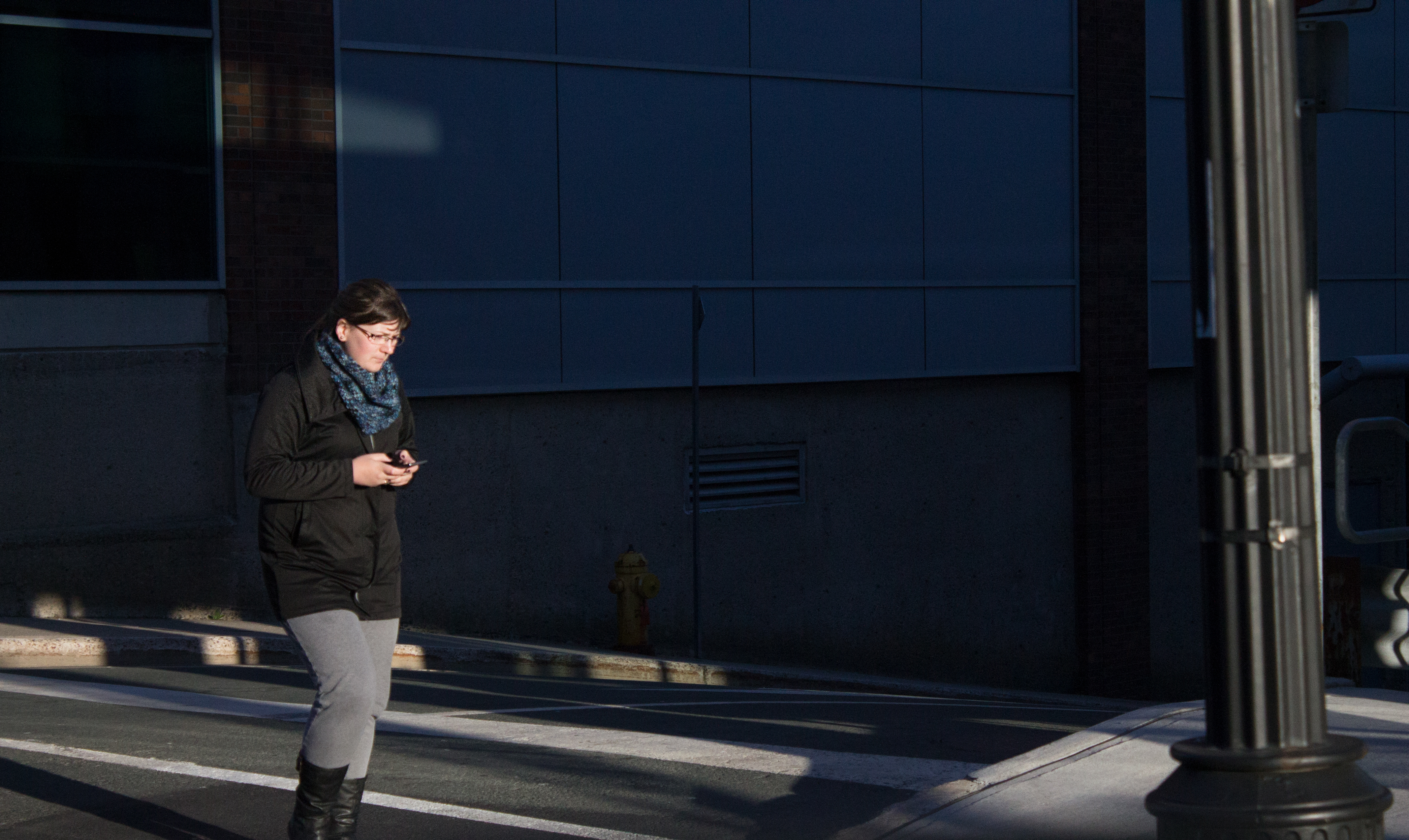The talking dead are slowly taking over the world and have infected downtown St. John’s, taking up sidewalks, tripping over cracks and searching for outlets to charge their phones.
Erica Yetman
Kicker
Distracted driving is a term everyone knows, but lately the talk has been distracted walking, or zombie walking.
Most have seen it, some have done it – walk around with their nose stuck in their phones paying little attention to the world around them. The walking dead are everywhere, hypnotized by six-inch screens.
One politician in Ontario thinks the epidemic is so bad he’s proposed legislation to make it illegal for those infected to cross the street while texting or talking on their cellphones.
The proposed legislation would see walkers fined $50 for the first offence, $75 for the second and up to $125 for a third offence.
In a city like St. John’s where many people choose to travel on foot, many with a cellphone growing from their hand, it’s possible such legislation could be a financial windfall for the city.
One CBC poll from 2016 found that 66 per cent of people surveyed supported zombie walking legislation.
George Murphy has been in the taxi industry since before cellphones were common commodities, and says the invention of the cellphone has definitely led taxi drivers to heighten their senses.

“The pedestrian always has the right away in my books and I think in the books of the law,” said Murphy. “But at the same time the pedestrian also has to have the heightened sense of awareness, too.”
Maggie Burton of St. John’s City council doesn’t believe zombie walking legislation is needed here, she says more needs to be done to protect pedestrian safety.
“We shouldn’t legislate against something that’s annoying or off-putting which is kind of what zombie walking is,” said Burton. “What we should be legislating against is tougher rules against car-centric cities.”
Cities like Amsterdam and Bavaria have instituted new technologies to protect distracted pedestrians. LED strips built into the pavement and synchronized with traffic lights allow downward-gazing walkers to check if it’s safe to cross without looking up from their screens.
“The problem is cars, not people negligently walking into them,” said Burton.
American Auto collision data from 2010-2014 found pedestrians using electronic devices were a factor in only 25 of 23,420 pedestrian deaths.
Murphy has seen his fair share of cellphone misfortunes and distracted walkers face consequences.
“I’ve seen some funny things too with people walking into telephone poles and parking meters and that sort of thing,” said Murphy, letting out a chuckle. “So people aren’t exactly attentive to their own security and safety, too, at the same time.”
Burton says the best way to save pedestrian lives and effect change is to make cars slow down and reduce speeds, implementing traffic measures and pushing enforcement.
Burton doesn’t believe pedestrians are the issue and thinks the city should adopt Vision Zero. Vision Zero, Burton says, is built around the idea that all deaths and serious injuries in traffic are preventable.
“Human errors are inevitable but streets and transportation systems should be designed so that errors don’t lead to death or serious injury,” said Burton. “I think it’s time we stop treating traffic deaths as normal in St. John’s.”
Vision Zero has already been adapted in Toronto, Edmonton and British Columbia and Burton says it’s time for St. John’s to get on board.
“When we plan roads we shouldn’t be planning for a certain acceptable number of deaths,” said Burton. “The only acceptable number is zero.”




Be the first to comment